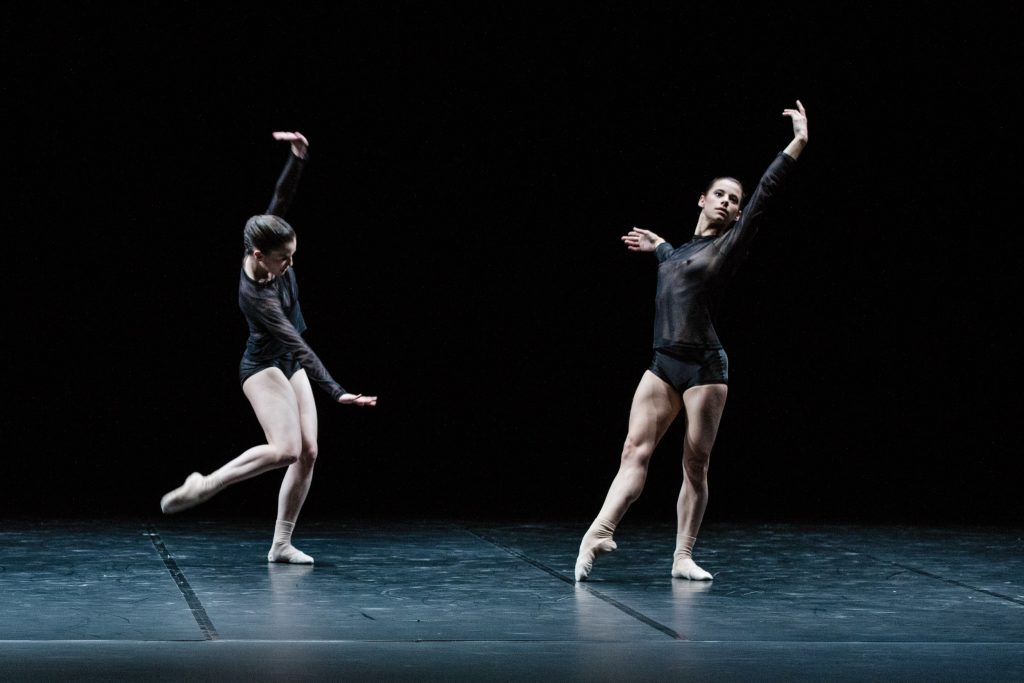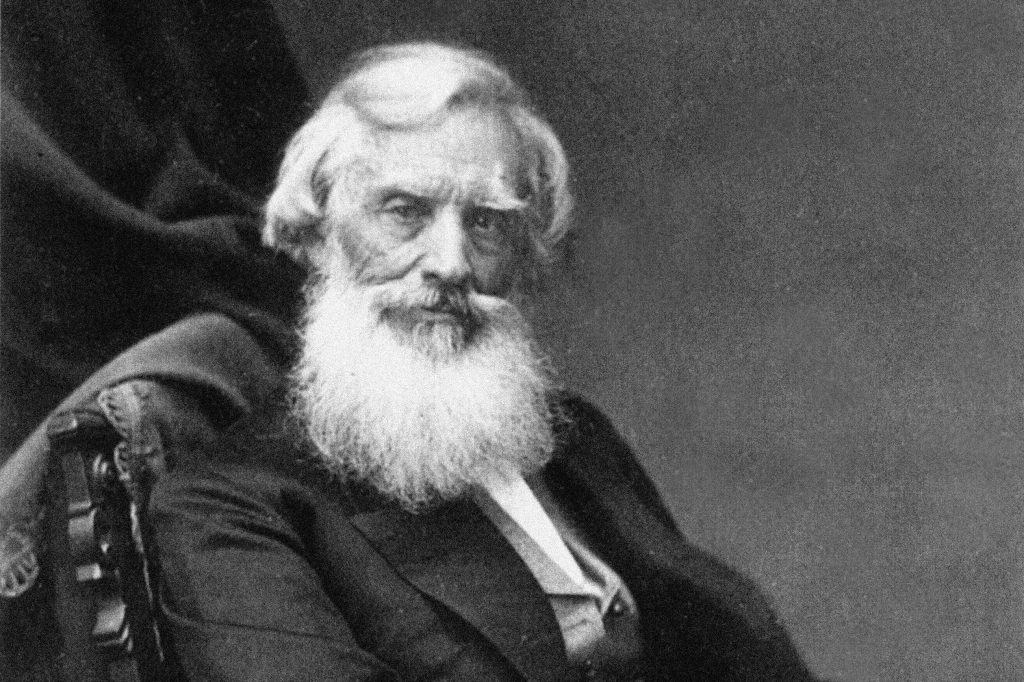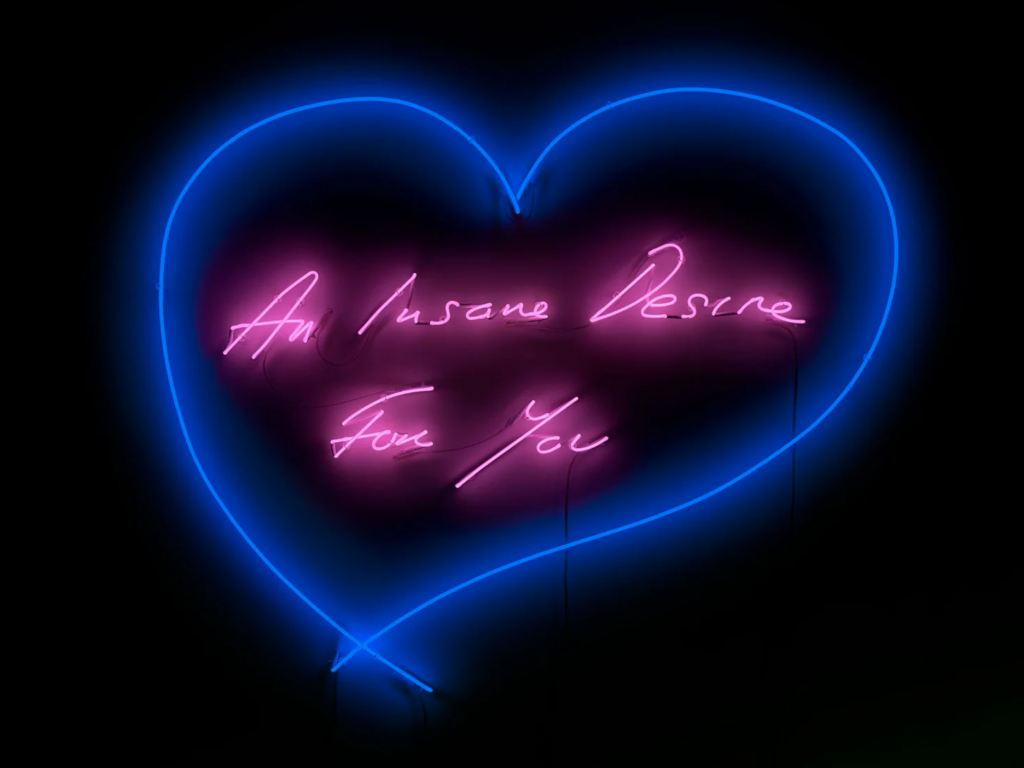Long tapered fingers, pointed nails almost as if they were claws, hold enigmatic objects, caress alien faces, point the way to the world of Danilo Stojanović. A water world, fairy-tale, metaphysical, combining darkness and playfulness, plausible and surreal.
Danilo, Istrian by birth (born in 1989 in Pula) but Venetian by adoption (trained at the Academy of Fine Arts in Venice and then working in the lagoon city) lets emerge in his works the link with the water of the Adriatic: the elements of his paintings fluctuate, immersed in layered but transparent blue and green atmospheres. A dense transparency – as oxymoronic as it sounds – just like that of the lagoon. Fluid and dreamlike figures
evoke a world free from constraints and precise spatial or temporal coordinates. They seem to belong to a distant dimension, detached from terrestrial naturalism, yet vaguely familiar, perhaps because they bring us back to the world of fairy tales of our childhood.
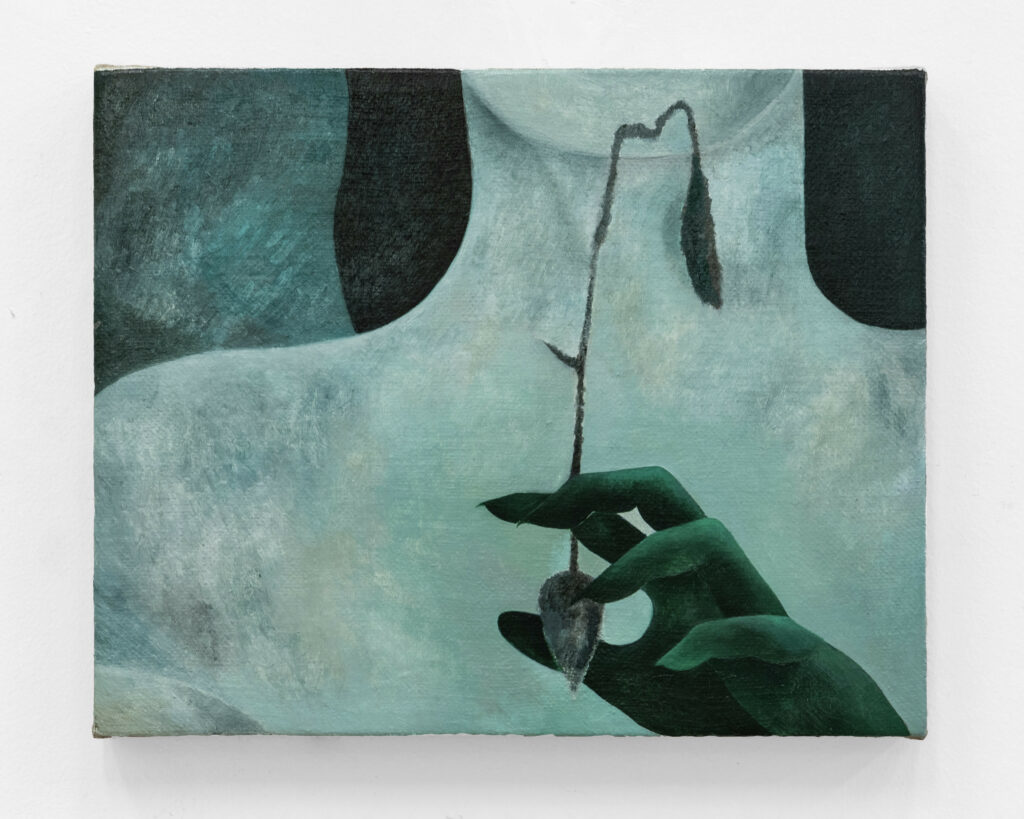
Predominantly on a small format,Stojanović’s canvases indeed resemble illustrations from a fairy tale book; the story they tell is not, however, already given: everyone is invited to create and imagine their own. It is the artist himself, on the other hand, who undertakes this operation in order to start creating: letting memories of fairy tales and Croatian folklore from his own childhood emerge, he does not limit himself to painting the characters but invents new ones, the protagonists of his own personal fairy tale.
In everyone’s daily life there are moments of vivid imagination, in which memories and dreams appear, come together and then fade away, the memory of those visions becomes blurred, escapes us. With his brush, Danilo fixes these moments on the canvas, gives them concreteness, thus embodying that activity of our psyche that mirrors, distorts and then mixes dreams, memory and experience. It is difficult to say whether the figures represented are a metaphorical reinterpretation of the past, an omen, a dream, or pure fantasies of forms: the interpretation is up to the observer.
They are “alien, alienating and alienated entities”, as Livia Parolin defines them in a critical text dedicated to the artist: they seem to be recognisable, yet they elude us; they have humanised details that we can identify, yet they are obscure and mysterious; they are often juxtaposed with everyday objects such as candles and flower vases, yet they share with them a surreal atmosphere that has little that is everyday and familiar. The world evoked by Stojanović’s works therefore lies exactly halfway between the natural and the supernatural, a suspended bridge connecting the spectator’s shore of the fantastic and that of the real. The artist thus succeeds in translating into painting the transition between sleep and wakefulness, the condition in which everyday forms take on symbolic and dreamlike guises, and vice versa. Figuration is treated in metaphorical form, remixing the relationships between realism and artifice, verisimilitude and tendency to attraction. The observer is thus prompted to question the meaning and origin of the entities he sees in order to create his own narrative.

The colour tones used create nocturnal atmospheres, the figures seem enveloped in darkness or the abyss. However, they are not gloomy or dark: there is no lack of flashes of light and bright colours (red in particular) to give a touch of irony and playfulness. This irony lightens the works and pulls them from a darkness with no return. If at first glance it is darkness that dominates, lingering a few minutes longer in front of the work, the viewer realises that sometimes it is instead the glimmers of light that prevail. A metaphor for this is the work Midnight Blossom: the protagonist of the canvas – together with an eerie but at the same time elegant hand, with tapering fingers and pointed nails – is the nocturnal cereus, a peculiar cactus native to Arizona, also called ‘Queen of the Night’ because of its peculiar flowering that begins after sunset and culminates with the opening of the flowers at midnight: this characteristic makes it a perfect symbol of Stojanović’s poetics, of the invitation to see in the darkness a fertile ground for the creation and birth of something positive. The flowers of cereus thus become the image of all the elements that blossom amidst the midnight blue skies of the artist’s other canvases, which – although at a quick glance they may seem so – are not intended to be pessimistic visions or tales of terror (wolves and skulls appear recurrently as in the darkest legends). What the artist seems to be telling us, rather, is that we should not be afraid to explore the dark side that characterises the unconscious of each of us, that there can also be a playful aspect in it. In order to grasp it, however, we need to recover the naivety of childhood, to allow ourselves to be attracted by the unknown and the mystery, otherwise too often avoided in order to take refuge in the comfort zone of the immediately visible, measurable and, therefore, controllable
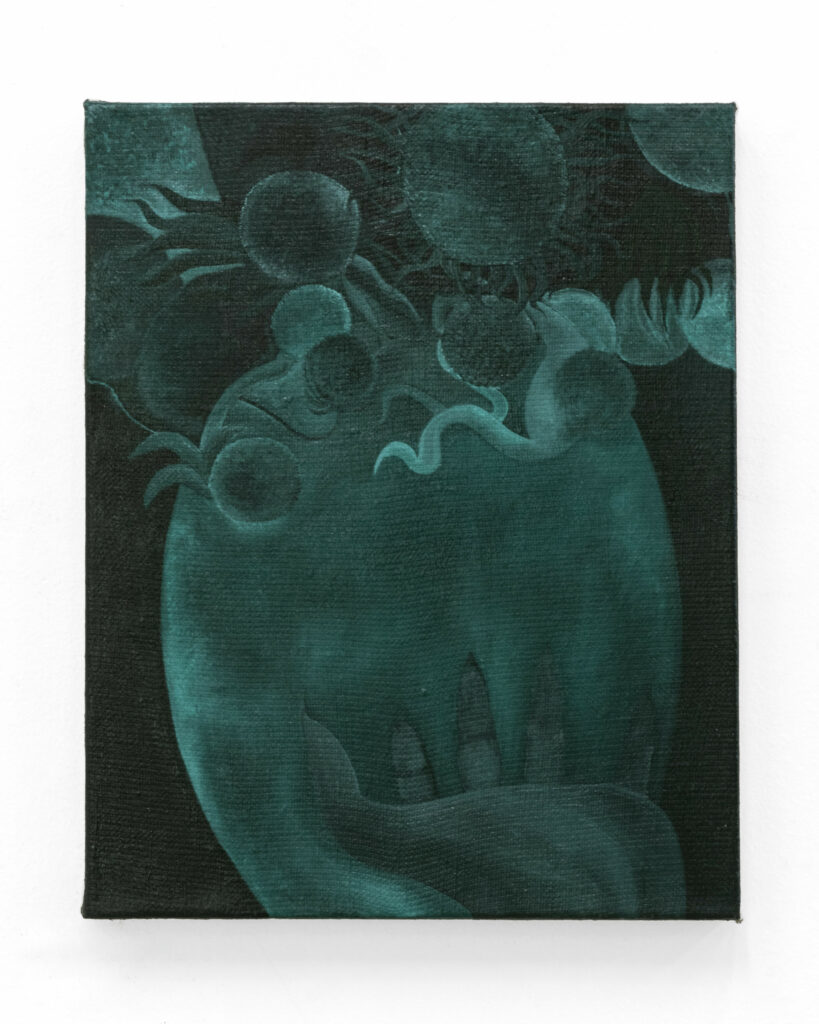
The reference to the concept of uncunny, the Freudian uncanny, is evident, as well as declared by the artist himself.
“The uncanny is that kind of frightening which goes back to what has been known to us for a long time, to what is familiar.” Sigmund Freud, The Uncanny, 1919
Sigmund Freud, The Uncunny, 1919
Derived from Sigmund Freud’s essay of the same name, the uncunny indicates in the aesthetic sphere the feeling that develops when an object (or a person, an impression, a fact or a situation) is perceived as both familiar and foreign at the same time: a subtle feeling of anguish and confusion results, which tends to distance us from that thing, to ignore it.
Stojanović’s works explore and confront exactly this kind of estrangement, inviting us to do so in turn. His images are arcane and obscure, yet appear intimate and knowable. Moreover, by combining atmospheres and gloomy elements with touches of bright colour, they seem to tell us that our unconscious, our fears and anxieties are not necessarily a completely dark place to sink into, but one into which we can instead dive from time to time and float lightly, just like the figures on the canvases.
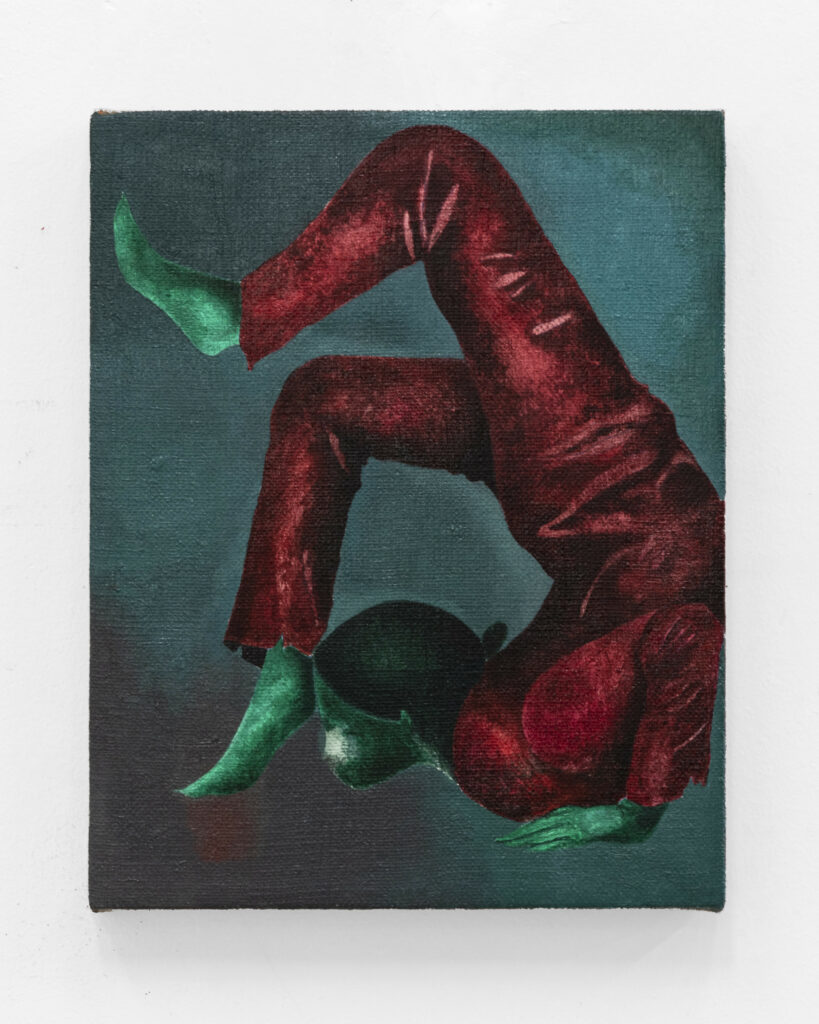
In this encounter with the unconscious, in blurring the boundaries between reality and dream, Stojanović reflects on multiple models: the perceptive estrangement of metaphysics, the dream worlds of Surrealism and Symbolism (also strongly influenced by Freudian psychoanalysis); the floating corpuscles of Redon, the spectres and restless presences of Panuška, as well as the whole mystical-esoteric current that characterised fin du siecle art in Eastern Europe; there is no lack of suggestions derived from German Expressionism, the anxiety of Munch’s painting, the ironic melancholy of Norbert Schwontkowski, whose small canvases -just like Stojanović’s- tell a story with just a few brushstrokes, somewhere between abstraction and representation. Looking instead at the contemporary scene, an artist whom Stojanović studies with admiration is Kai Althoff, whose narratives composed of fragmentary and indecipherable elements draw the viewer into unknown territories: what the two artists share is an invitation to immerse ourselves in their subtle play of details, allusions, itineraries, enchantments.
Permeated with diverse influences, Stojanović’s works participate in the trend of a return to painting that is increasingly present in today’s art and highlighted by the most recent contemporary art fairs (offering a cross-section of the convergences and lines of force in the current art system). After years in which artists’ research seemed to be oriented towards installation works or the use of the latest technologies, and to relegate figuration to a conservative position that was out of step with the times, the recently concluded editions of Paris +, Art Basel, and the Italian Artissima, ArtVerona, and Roma Arte in Nuvola reveal a return of the human (or at least anthropomorphic) being as a pictorial object to be liquefied, deformed, hybridised; a painting that is increasingly free, freed from compositional rigidity, to directly access the dreamlike dimensions of dreams or nightmares. A way, therefore, to escape reality or, better still, to re-elaborate it, to make it one’s own through imaginative poetics, translating into the language of art the emotions and feelings of restlessness that pervade us in the face of the need to face the challenges of the crisis of the contemporary world.

